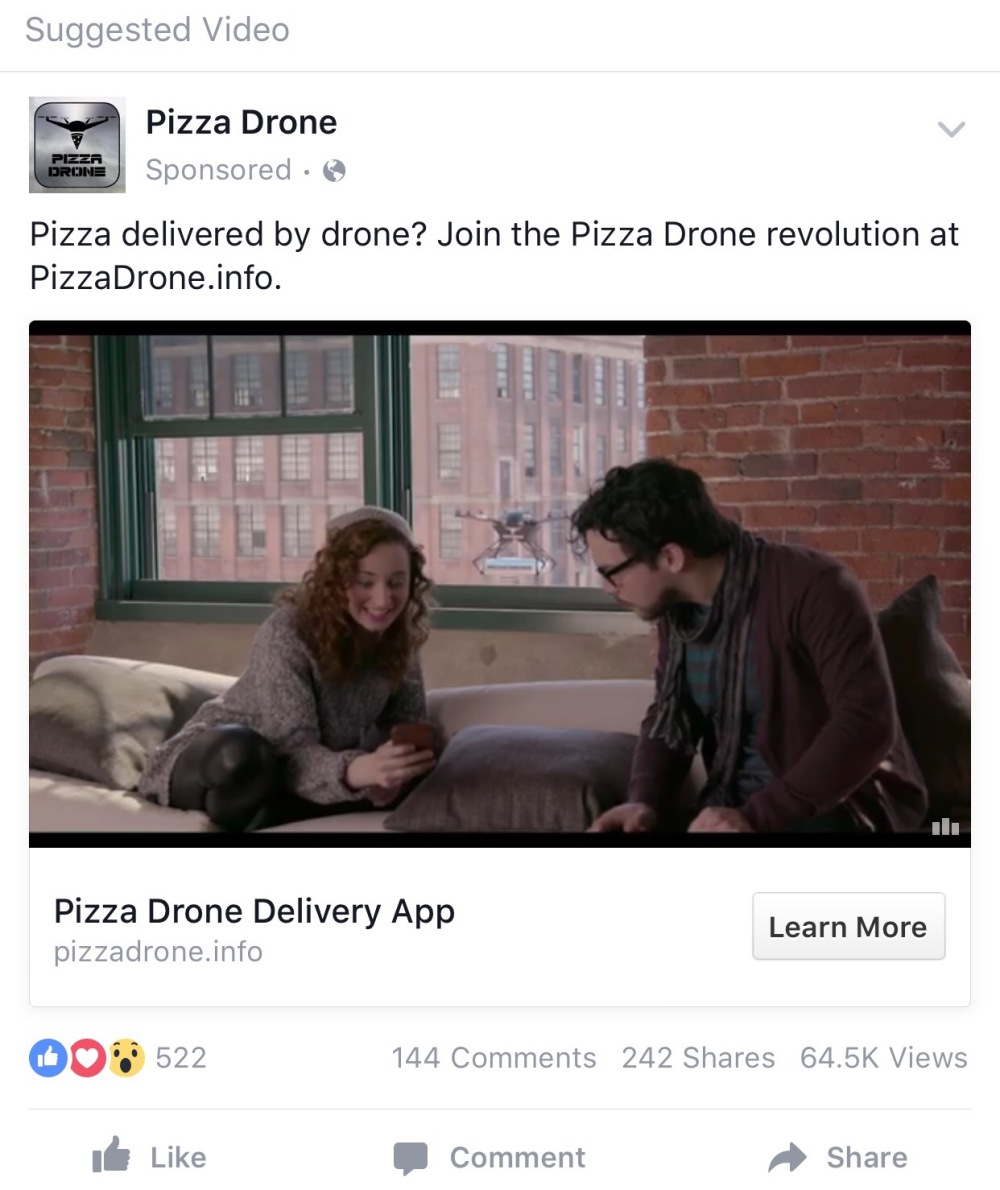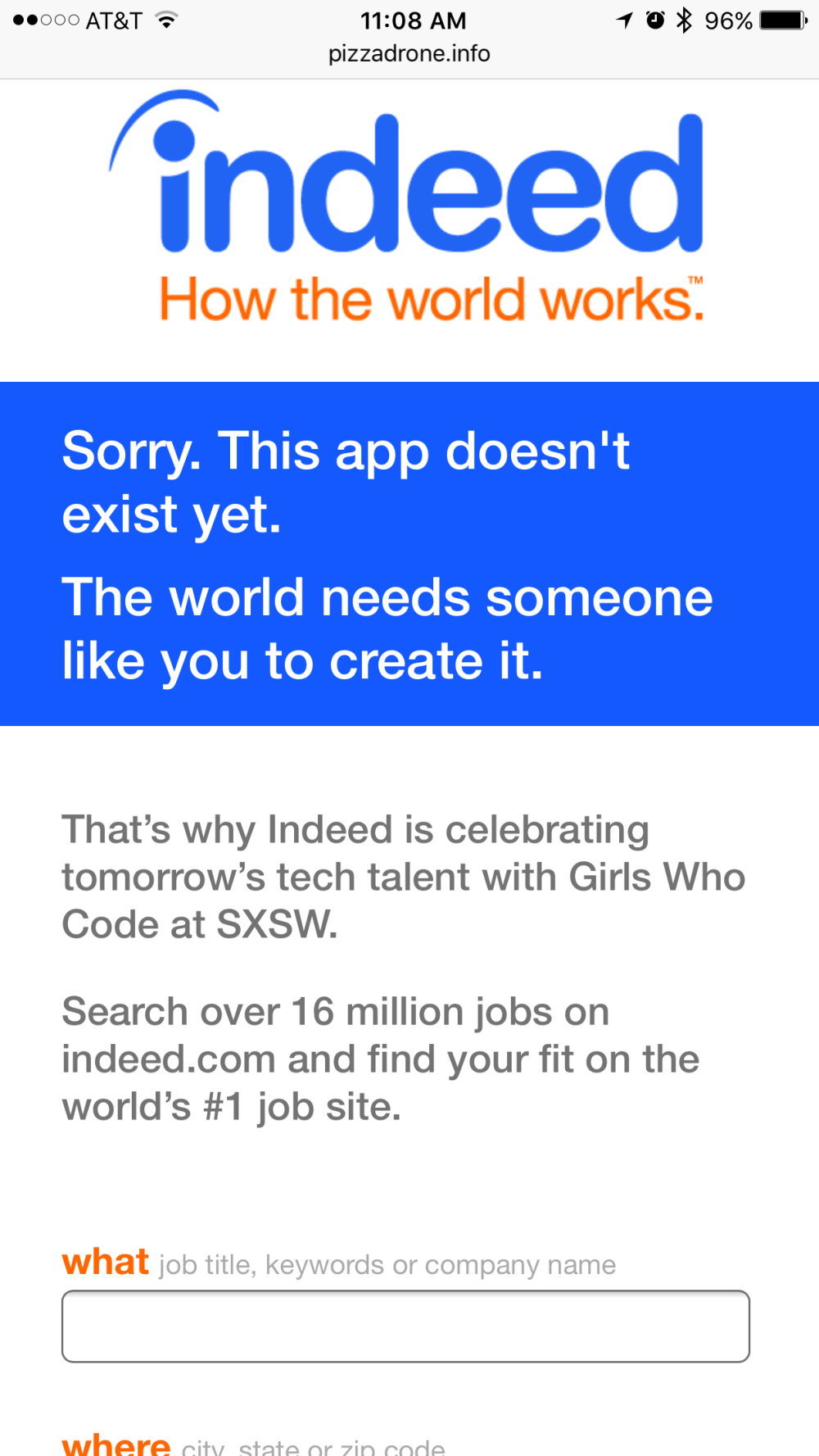The Next Creative Battleground: Video Captions?
With Facebook’s move to auto-displaying captions on videos in the Feed, the creative has a new place to flex their muscles – good old fashioned text.
The latest creative use of subtitles comes from Dos Equis as they bid farewell to “The Most Interesting Man in the World” as he presumably is bound to become “The Most Interesting Man in the Galaxy” or something else… That isn’t the point. The point is Dos Equis is using their captions in Facebook’s caption on default land of the Feed to drive people clicking to expand or unmuting:
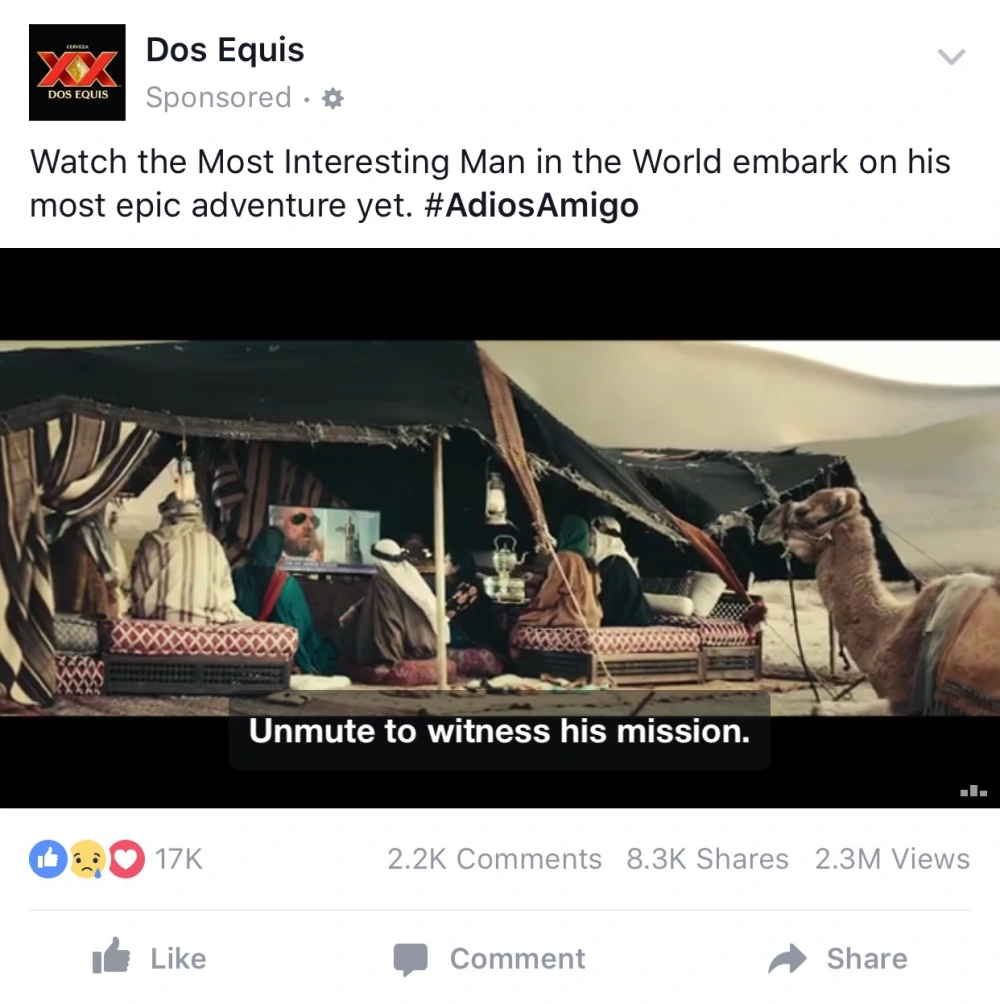

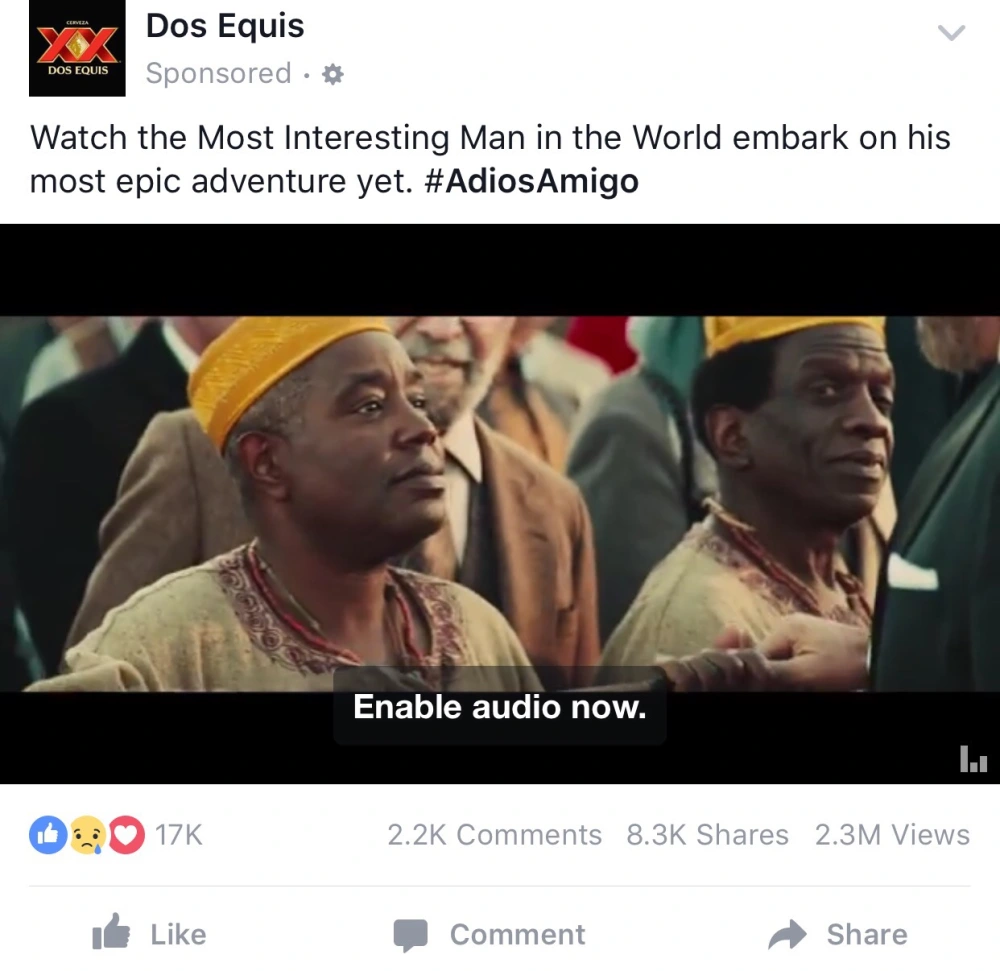

Now, admittedly, this isn’t the most ingenious use of captioning to drive home a point, but it’s a start.
Hotels.com used their “Captain Obvious” character and their own captions to create a fun experience with sound off a while back, but now that Facebook allows the uploading of .SRT files for on-video captions, that means a similar experience for uses across videos.
Fun story about .SRT files + Facebook – they’re finicky. We just ran a global video campaign with 50+ .SRT language caption files – hard work but the campaign was awesome and a ton of fun.
When will Twitter jump on board the no sound + caption train? Has to be soon, right?
Why We Should All be Rooting for Twitter
Everyone hates the Patriots. OK, not everyone, but a lot of people. They don t hate them because they’re bad, though, they hate them because they’re the best. It sucks watching Tom Brady somehow find a way (Excelt for losing to Denver tonight!) time and time again. We all want to root for the underdogs… we want to get behind those scrappy teams that don’t have all the flash and glitz. The teams that we grew up on that are fighting.
That’s how I think of Twitter.
I sent my first Tweet from a classroom computer at the School of Visual Concepts where Clay McDaniel and Andy Boyer taught me more than I’d known before about the world of social marketing. After that class, I told myself I’d be doing that as part of my job… I started working for Clay and Andy 5 months later (and then returned to teach that same class for three years).

Facebook is, by all accounts, the leader in today’s Internet – and don’t get me wrong, I like Facebook a hell of a lot more than I like the Patriots – and they earned it. They took down MySpace. They grew even as Google was biting at their heels and making plays.
Twitter, though, came up at roughly the same time and, for all intents and purposes, had the same chances Facebook had to be the biggest on the block, but they didn’t – for a number of reasons.
But instead of LOLing at Twitter’s continued attempts to keep growing and to make products that bring more value to its user base, we should be cheering them on. Twitter, after all, is still where many go for “breaking” information. It’s where you can learn about a trending topic in an unfiltered feed of people you follow – sans algorithm.
Facebook probably wouldn’t be the Facebook it is today without Twitter. Their pushing and competing between 2010 – 2014 brought us more advancements and features in the mobile world than we’d seen the previous 10 years before that. Competition in the social space is just as important as competition in the world economy — it keeps innovation flowing.
The people I’ve worked with at Twitter are incredibly smart and laser focused on users and the brands that help make Twitter what it is.
//platform.instagram.com/en_US/embeds.js
I made a joke the othe night about missing the #FailWhale — and I was only slightly kidding. The days when you’d get a #FailWhale were exciting because Twitter was growing so quickly and so many people were engaged around a single topic (usually) that the servers literally couldn’t keep up. It was kind of fun. I’m also a fan of the Robot who’s arm fell off.
As an advertiser, Twitter’s ability to target real-time conversations has always been an incredible draw for me. They’ve innovated quickly to bring new formats which aren’t just exciting for brands, but engaging and interesting for users. With the addition of Periscope, Twitter has an opportunity to tap into real-time conversations and situations that can put anyone from anywhere in the middle of the action.
So, I’m excited for what @jack and the team have in store. I’ve always been a fan, but I think more people have an incredible opportunity to see how awesome Twitter really can be.
Let’s root for the underdog.
Disclaimer: This post and the entirety of this blog are my personal opinions. Content included in no way is the opinion of my employer, Microsoft. I was not and will not be compensated for this post. I also like Facebook and Instagram — even YouTube… They just aren’t getting slammed right now.
Advertisers’ Notes: Facebook Launches Sports Stadium in Bid to Win Live Sports Convo Battle Royale
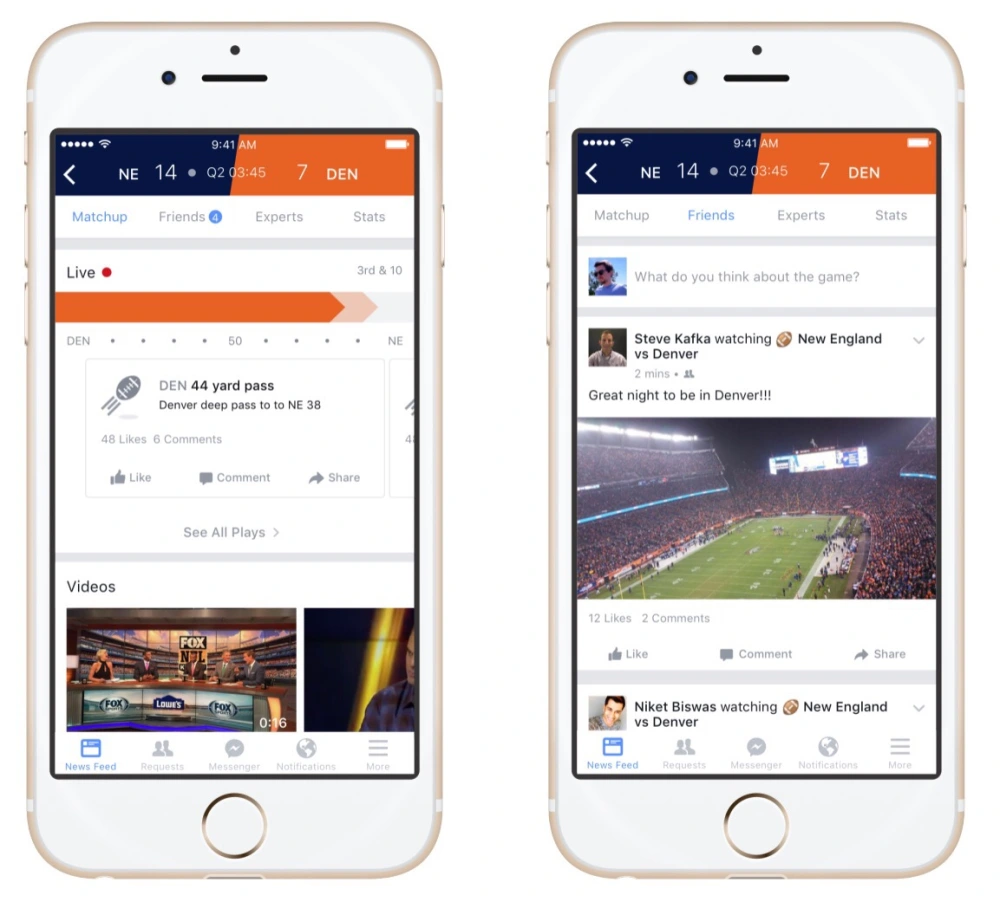
Twitter gets a lot of credit for being the place for “live” social commentary, whether it’s about moments in time (elections, etc.) or sporting events. However, Facebook has been really keen the past few years to tell advertisers they have a much larger volume ofnconversation around events… the only problem is that Facebook’s security features and the nature of the algorithmically-curated News Feed mean that users are rarely seeing conversations about an event from outside their friend circle.
Facebook is taking a step toward creating a space to watch, participate in, and curate conversations around events — starting with the launch of Sports Stadium.
With 650 million sports fans, Facebook is the world’s largest stadium. People already turn to Facebook to celebrate, commiserate, and talk trash with their friends and other fans. – Facebook Sports Stadium Press Release
The What
Users will be able to see stats, clips, expert commentary, and posts from other fans in the experience, which is launching for “American Football” now.
The So What?
While this is relegated to sports right now, it’s easy to see how Facebook could easily port these moments-based conversation extravaganzas to things like the Academy Awards, political debates, and national events/holidays.
Why Should Advertisers Care?
These new experiences provide the future opportunity for sponsorship of events (think Red Bull having Stadium-like events for their Soap Box Derby thing), ad inclusion via sponsored content within the experiences (think stats brought to you by Bing), and through more traditional display-type ads within the experience (think Click Here to Win an iPad).
Burson-Marsteller Commentgate/Deletegate Demonstrates Need for Social Media Policies
 There’s been this ongoing debate in the marketing profession for a while now about where social media should live within the whole mix. I’m definitely part of the camp that sees (as my employer Spring Creek Group does) Social living in the middle of a triangle that includes Marketing/Advertising, PR, and Customer Service. Now, there are many in each camp who will talk, at length, about why their respective organizational fiefdoms should hold the Social Media reins, but none has really made a convincing argument that’s become widely agreed upon.
There’s been this ongoing debate in the marketing profession for a while now about where social media should live within the whole mix. I’m definitely part of the camp that sees (as my employer Spring Creek Group does) Social living in the middle of a triangle that includes Marketing/Advertising, PR, and Customer Service. Now, there are many in each camp who will talk, at length, about why their respective organizational fiefdoms should hold the Social Media reins, but none has really made a convincing argument that’s become widely agreed upon.
However, what happens more often than not are cases where each part of that triangle make incredibly embarrassing blunders that shoot their argument for control squarely in the foot. The most-recent of these tremendous gaffes comes on the heels of what might be one of the biggest marketing-related stories in a while – Burson-Marsteller‘s campaign on behalf of Facebook to smear the crap out of Google. I’m not a fan of Google and believe their “don’t be evil” mantra about as much as I believe anything that comes out of Sarah Palin‘s mouth, but come on Facebook.
But, that’s beside the point…
When Burson-Marsteller was outed as the agency that took on this devious client project, people took to Burson-Marsteller’s Facebook Page to let them know how they felt… only to have their comments deleted by Burson-Marsteller’s Facebook community manager (or whatever the pseudo-equivalent to CMs in the PR world). Big no-no. WIRED broke the story about that and the Twitterverse has been exploding since.
This isn’t the first time this has happened. Heck, Apple deleted comments about the faulty iPhone 4 antenna from its community forums – and they have die-hard fans. What these situations do point out, though, is the importance of a public-facing Social Media Policy.
Policies like those at Best Buy, Coca-Cola, and others offer a one-stop shop for users to see exactly what they can expect when dealing with these brands in social. These policies not only say how the brands act in the social space, they also lay out guidelines for how they expect their communities to behave (i.e. their thoughts around what is and isn’t acceptable in their communities).
Yes, Burson-Marsteller crapped the bed by removing posts (some of which were probably warranted based on their idea of what was and was not appropriate on their page), but without outwardly sharing that view of “appropriate” content, they don’t have a leg to stand on when making that claim. If your page is receiving enough volume, or you plan on doing so in the future, you’ll want to look into creating a social policy.
Related articles
- Burson-Marsteller says it shouldn’t have pitched negative Google stories secretly for Facebook (latimesblogs.latimes.com)
- Fallout from Facebook’s Google Smear Scandal (pcworld.com)
- Facebook red-faced after PR attack on Google (windsorstar.com)
- Burson-Marsteller Deletes Critical Facebook Posts but Spares Google-Smear Flacks (wired.com)
